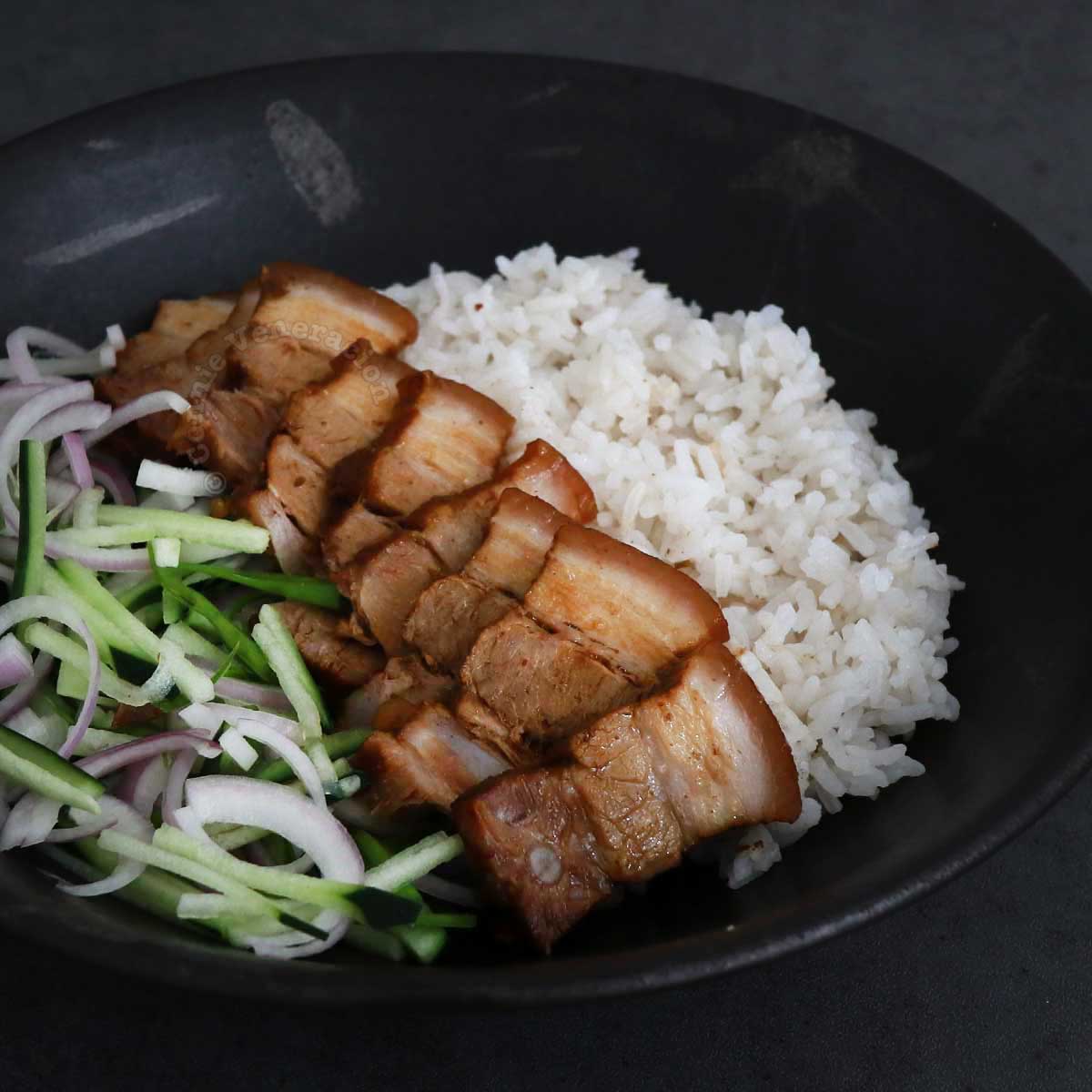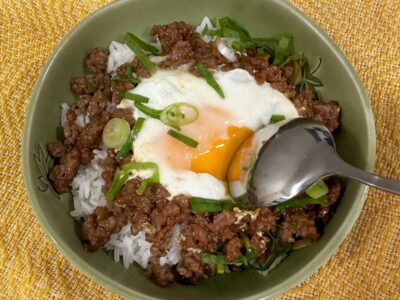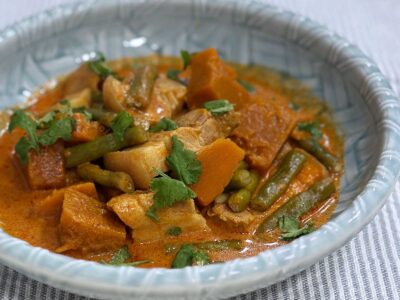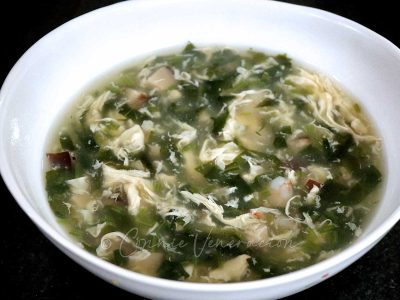Called tau yu bak in Hokkien cuisine, this dish of pork belly braised in three soy sauces is also heavily associated with Chinese-Malaysian cooking.
But why three soy sauces? Don’t all soy sauces taste the same? Oh, no! There are so many soy sauces in Asia and each one has its place in cooking. They aren’t always interchangeable. For example, when cooking teriyaki, it is imperative to use Japanese soy sauce. Substituting Chinese soy sauce or kecap manis will simply result in disaster.
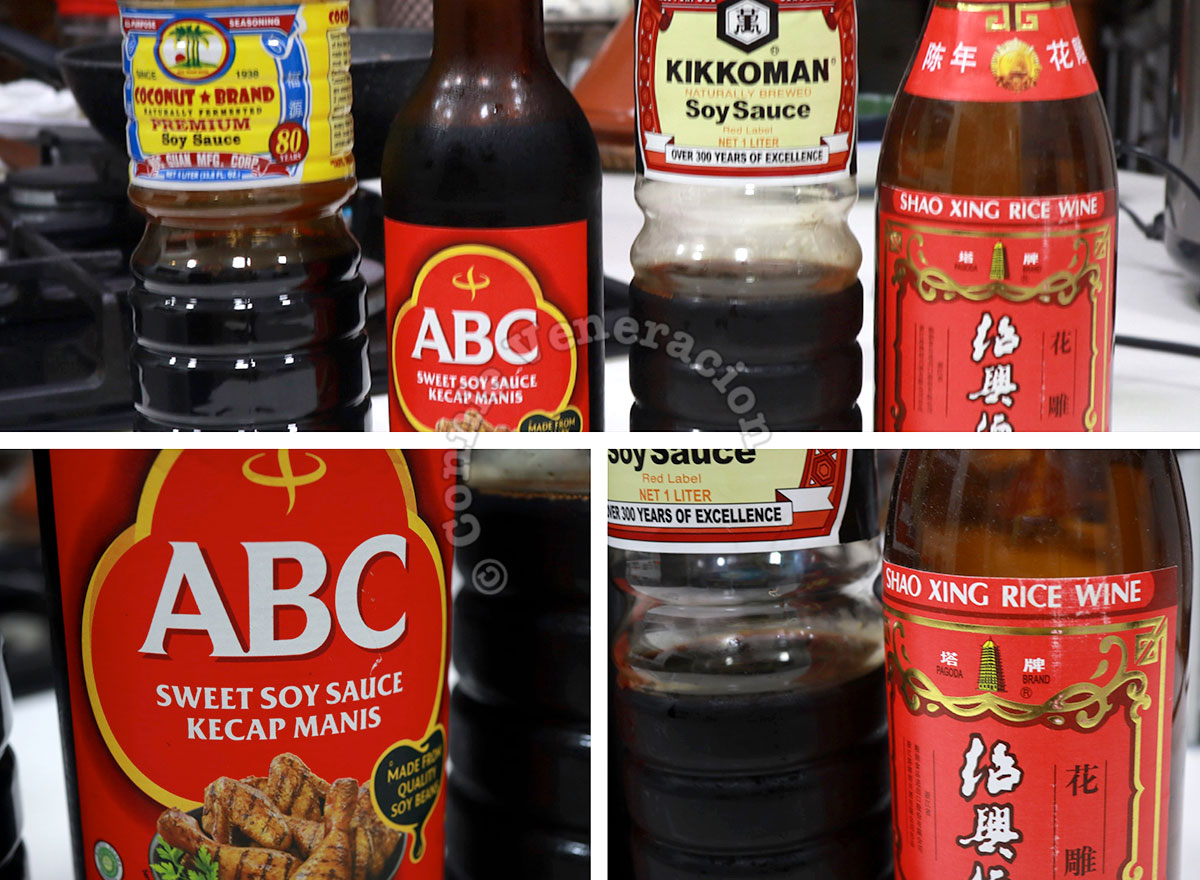
Because the flavor of this dish is a balance of salty and sweet, using Japanese light soy sauce, Chinese dark soy sauce and Indonesian sweet soy sauce (kecap manis) together is a must. Light soy sauce gives the dish a salty base, dark soy sauce completes the salty template while giving the dish a richer color, and kecap manis, a sweet soy sauce, provides the contrast that gives the pork and sauce a distinctive flavor.
But to achieve the perfect flavor profile, a few other ingredients, both liquid and solid, are needed. Shao Xing rice wine delivers a deeper richness. If you have not cooked with alcohol before, don’t worry — you won’t taste nor smell the alcohol after the meat is cooked. Know, however, that despite the long cooking time, not all of the alcohol with evaporate and dissipate. There will still be traces of alcohol in your pork belly dish but that is as things should be.
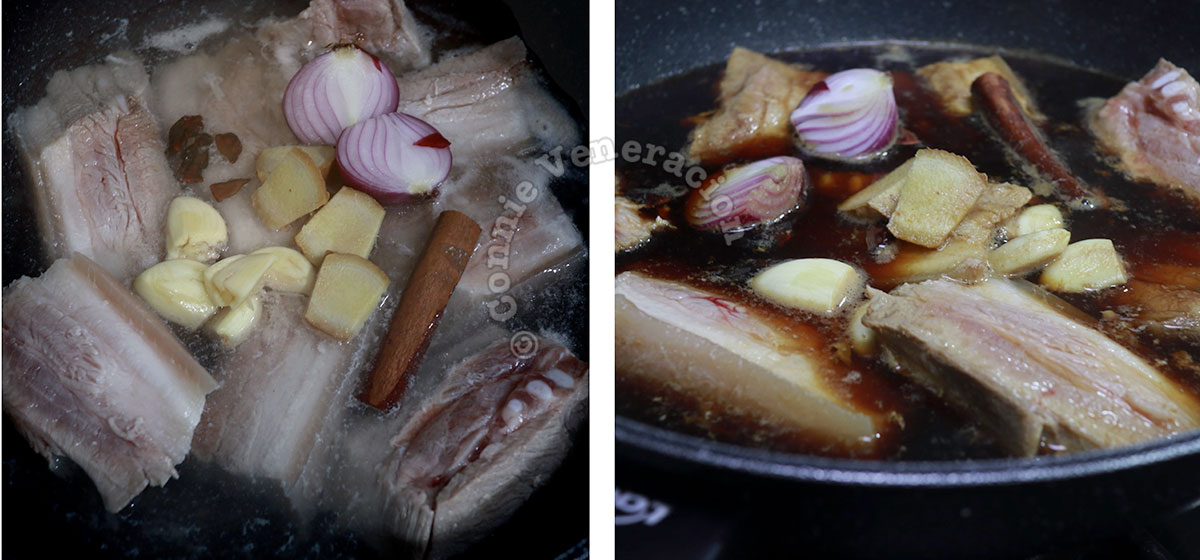
For the solid ingredients, there’s shallot, ginger, garlic, star anise and cinnamon. They don’t need to be chopped or minced. The garlic and shallot don’t even need to be peeled (but go head and peel them if throwing them unpeeled into the pot bothers you). All these spices are fished out and discarded after cooking. By that time, all their flavors have gone into the meat and sauce, and they are no longer needed.
Now, about my cooking procedure. The most common way to make tau yu bak is to cut the pork belly into bite-size cubes before dropping into the pan. I’ve no quarrel with that. But I like to cook the pork until the sauce has reduced considerably. Because the sauce darkens as it reduces, the pork darkens too — sometimes too much to look truly appetizing.
So, I cook the pork in fairly large pieces. When tender, I leave them to continue marinating in the sauce, off the heat, for an extra thirty minutes. Then, I scoop them out, lay them on a cutting board and slice them as neatly as I can manage. The sauce, meanwhile, is strained and boiled to reduced some more.
How long the sauce should be simmered depends on how much reduction you’re aiming for. I normally turn off the heat after 10 minutes. If you want a thicker and stronger flavored sauce, continue simmering for another five to seven minutes.
After arranging the sliced pork belly in bowls of rice, some of the sauce is drizzled over the meat and the rest is served on the side.
Three soy sauce pork belly
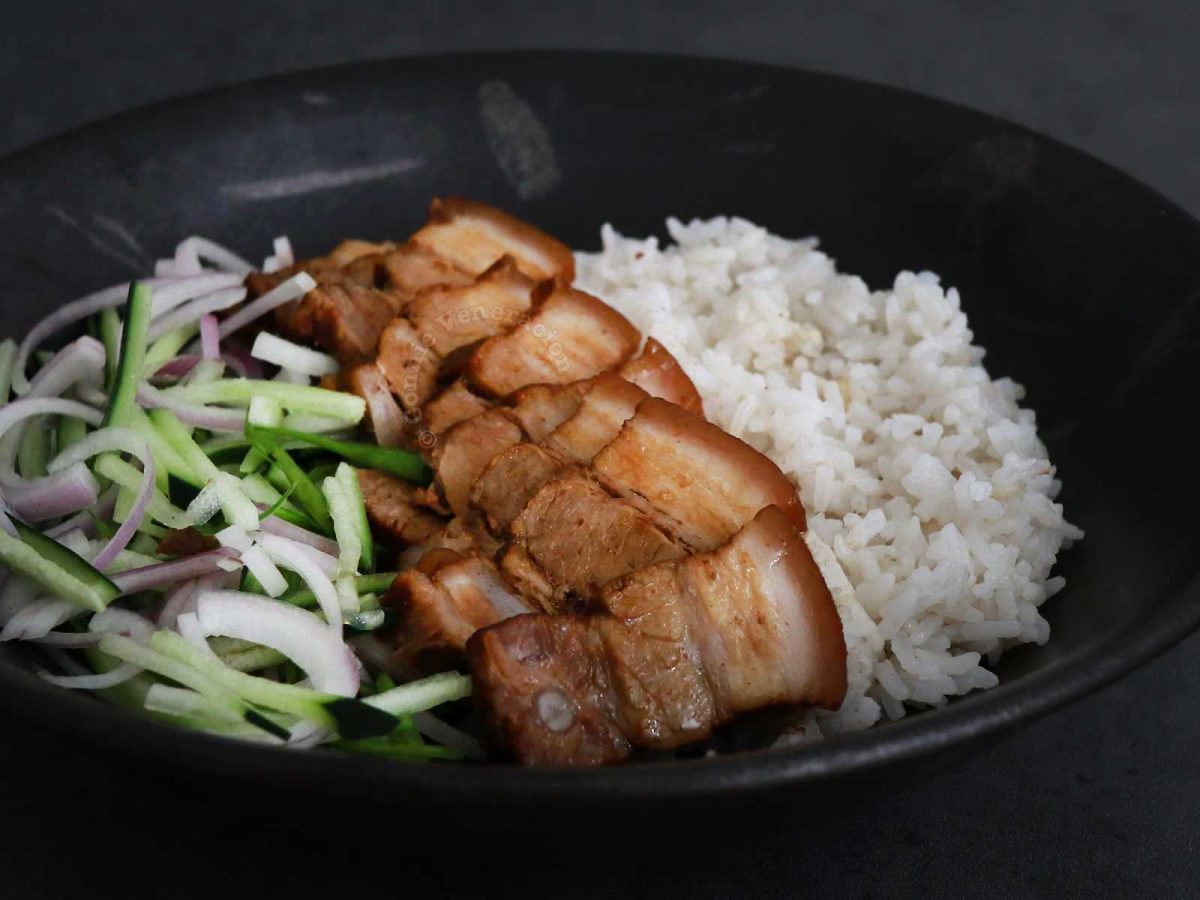
Ingredients
- 1 kilogram pork belly
- 6 tablespoons light soy sauce
- 3 tablespoons dark soy sauce
- 4 tablespoons kecap manis (sweet soy sauce)
- ½ cup Shao Xing rice wine
- 8 cloves garlic leave whole
- 1 shallot cut into halves
- 1 two-inch knob ginger sliced
- 2 star anise
- 1 cinnamon stick
- ½ teaspoon ground white pepper
Instructions
- Cut the pork belly into strips about two inches thick.
- Place the pork belly in a pan and pour in just enough water to cover.
- Add the rest of the ingredients and bring to the boil.
- Cover the pan, set the heat to low and simmer the pork belly for an hour to an hour and half or until fork tender.
- Turn off the heat and leave the pork in the sauce for thirty minutes.
- Carefully lift out the pork and transfer to a cutting board.
- Strain the sauce, discard the spices, pour back into the pan and boil uncovered to reduce some more (see notes after the recipe).
- Cut the pork belly into slices and arrange over rice in bowls.
- Spoon some of the sauce over the pork and serve.
- Pour the remaining sauce into small bowls and serve on the side.

